What's New
Displaying results 4491 - 4500 of 4899
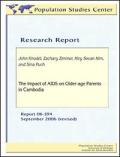
Resource | Publications,
Most adults who die of AIDS have older-aged parents who survive them. This, the first quantitative study in Cambodia to look at the impact of the death of a child due to AIDS on their older parents, directly contributes to "improving data collection and analysis on the status, trends and socioeconomic impact of the epidemic," a recommendation specifically set out by Cambodian government in their efforts to meet the United Nations Millennium Goals. Findings from this study can inform policy aimed at mitigating the impact of the epidemic on older persons.
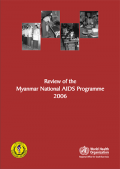
Resource | Reviews and Snapshots,
The general objectives of the review were to assess the progress of the national HIV/AIDS programme, especially in the areas related to health sector response, and provide recommendations for the revision of strategies and interventions.

Resource | Presentations,
This presentation presents the findings of a case study of drug toxicity on a woman diagnosed as HIV positive. It also outlines a suggested management plan moving forward.

Resource | Presentations,
This presentation summarizes the Modified Directly Observed Therapy (MDOT) study which aims to evaluate the method of MDOT at National Pediatric Hospital in Phnom Penh, Cambodia.

Resource | Presentations,
The primary objective of the STI survey is to determine the prevalence of Neisseriagonorrhoeae, Chlamydia trachomatis, Treponema pallidum, HIV, and related risk behaviors among specific sentinel groups.
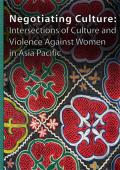
Resource | Publications,
Asia Pacific Forum on Women, Law and Development (APWLD), in partnership with the National Centre Against Violence (NCAV) based in Mongolia, organised a consultation on 11-12 September, 2006 on 'Culture and Violence Against Women in Asia Pacific' with the UN Special Rapporteur on Violence Against Women.
The Consultation aimed to understand and articulate how, despite the fluidity and contestability of cultural norms, oppressive elements of culture, which invariably reflect and reinforce patriarchal power relations, gain dominant representation. The Consultation sought to strategise how a women's human rights agenda can be advanced in this context, providing effective strategies for both the women’s movement in Asia Pacific and for the UNSRVAW for inclusion in her recommendations to States and other actors.
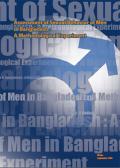
Resource | Publications,
Bangladesh has an internationally recognized and well-established 2nd generation HIV/AIDS surveillance system in place, which helps to closely monitor the HIV situation and to understand the levels of risk behavior associated with HIV infection within population groups surveyed. Groups so far included in the surveillance system have been male, female and transgender sex workers, men who have sex with men, injecting drug users and representatives of 'clients of sex workers groups' such as rickshaw pullers, truckers, STD patients, dock workers, launch workers, 'babus' and students.
This study was designed to obtain a better understanding about the sexual networks of men in Bangladesh with a range of different partners. Additionally, in an effort to correct for 'social desirability bias' in this type of study, extensive efforts were made to carry out a parallel data collection exercise using the 'ballot box' method. This method is a first for sexual behavior research in Bangladesh, and just one of the important contributions made by this study.
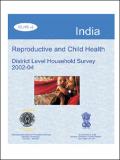
Resource | Publications,
The Reproductive and Child Health (RCH) programme that has been launched by Government of India (GoI) in 1996-97 is expected to provide quality services and achieve multiple objectives. It ushered a positive paradigm shift from method-oriented, target-based activity to providing client-centred, demand-driven quality services. Also, efforts are being made to reorient provider's attitude at grassroots level and to strengthen the services at outreach levels.
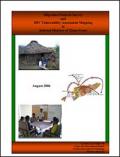
Resource | Publications,
Around the world, research and experience have shown that migration and mobility increases vulnerability to engaging in HIV-risk behaviour. In the case of Timor-Leste, mobility is particularly relevant due to massive population movements in recent years associated with the post-referendum conflict. During the violence of 1999, it is estimated that approximately 250,000 people, or one quarter of the population, fled to neighbouring West Timor. Since the cessation of violence, nearly 200,000 Timorese have returned to their villages and communities. However, endemic poverty and lack of opportunities in rural areas continue to contribute to rural-urban migration movement and mobility.
The overall aim of this study was to provide baseline data on mobility patterns, HIV/AIDS awareness and vulnerability in Timor-Leste and comprised of two parts - the Migration Patterns Survey and Vulnerability Assessment Mapping.
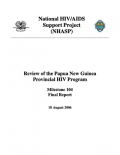
Resource | Publications,
The Papua New Guinea (PNG) national response to HIV and AIDS has expanded significantly with a strong focus on provincial level activities including the establishment of Provincial AIDS Committees (PACs), increased grant funding for community level activities, increased involvement of government and non-government partners and greater engagement with Provincial and District level governments.





